
Published:
Readtime: 9 min
Every product is carefully selected by our editors and experts. If you buy from a link, we may earn a commission. Learn more. For more information on how we test products, click here.
The Tesla Model 3 Performance (from AUD$80,900 plus on-roads) is the quickest Musk mobile money can buy in Australia. It takes one of my favourite electric vehicles and injects it with 343kW of power for a 0 to 100 km/h time of 3.1 seconds (with rollout subtracted) before going on to a top speed of 262km/h. More impressively, it manages these performance figures while achieving a WLTP-rated range of 528km, slotting it between the Dual Motor All-Wheel Drive Long Range (613 km) and Rear-Wheel Drive (513 km).
For the first time, adaptive damping technology is found alongside sports seats, performance brake pads, staggered performance tyres, firmer bushings, stabiliser bars, and more structural stiffness. It has all the makings of a value-for-money performance car bargain, but what’s it like to live with for a few days?
RELATED: Here’s How Much a Tesla Will Cost You in Australia.
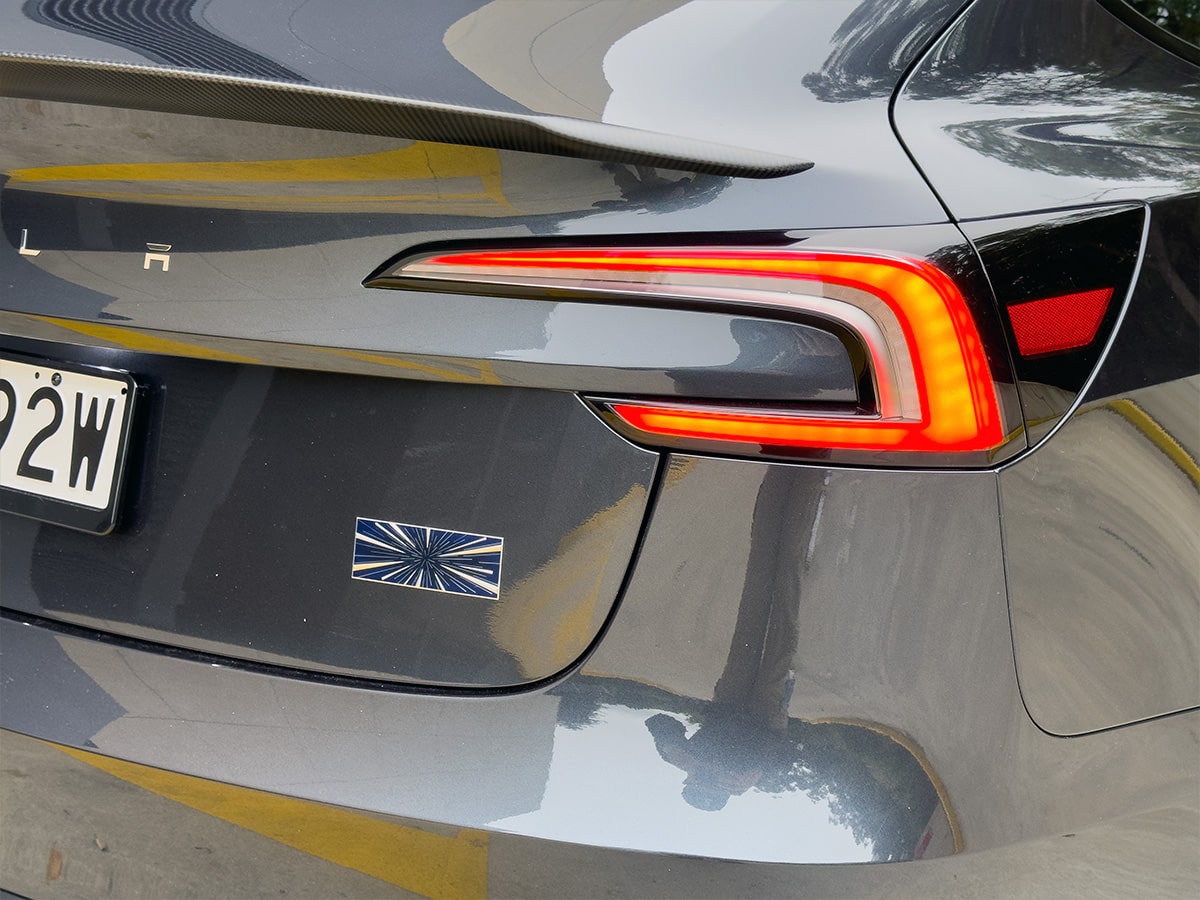
What Does the Tesla Model 3 Performance Cost?
Last year, the base-model Tesla Model 3 Rear-Wheel Drive was my favourite electric car, and with recent price drops, it represents even greater value at $54,900 before on-road costs. It actually makes the sharply priced Model 3 Performance look quite expensive at $80,900 plus on-road costs.
However, additions to this model are not entirely focused on straight-line capability and when you compare it to other vehicles that offer similar performance for the money, it’s a relative bargain.
The closest competitors to the Tesla Model 3 Performance include these 4-door electric sedans:
- Polestar 2 Dual Motor with Performance Pack – from $77,900 plus on-road costs
- Hyundai Ioniq 6 – from $85,500 plus on-road costs
- BMW i4 M50 – from $133,900 plus on-road costs
There’s also the Hyundai Ioniq 5 N (from AU$111,000 plus on-road costs) which has cemented itself as the best electric vehicle I’ve ever driven. Although, it’s probably an unfair comparison given the price difference and the fact that it’s an SUV, albeit with sports car handling and driving characteristics.
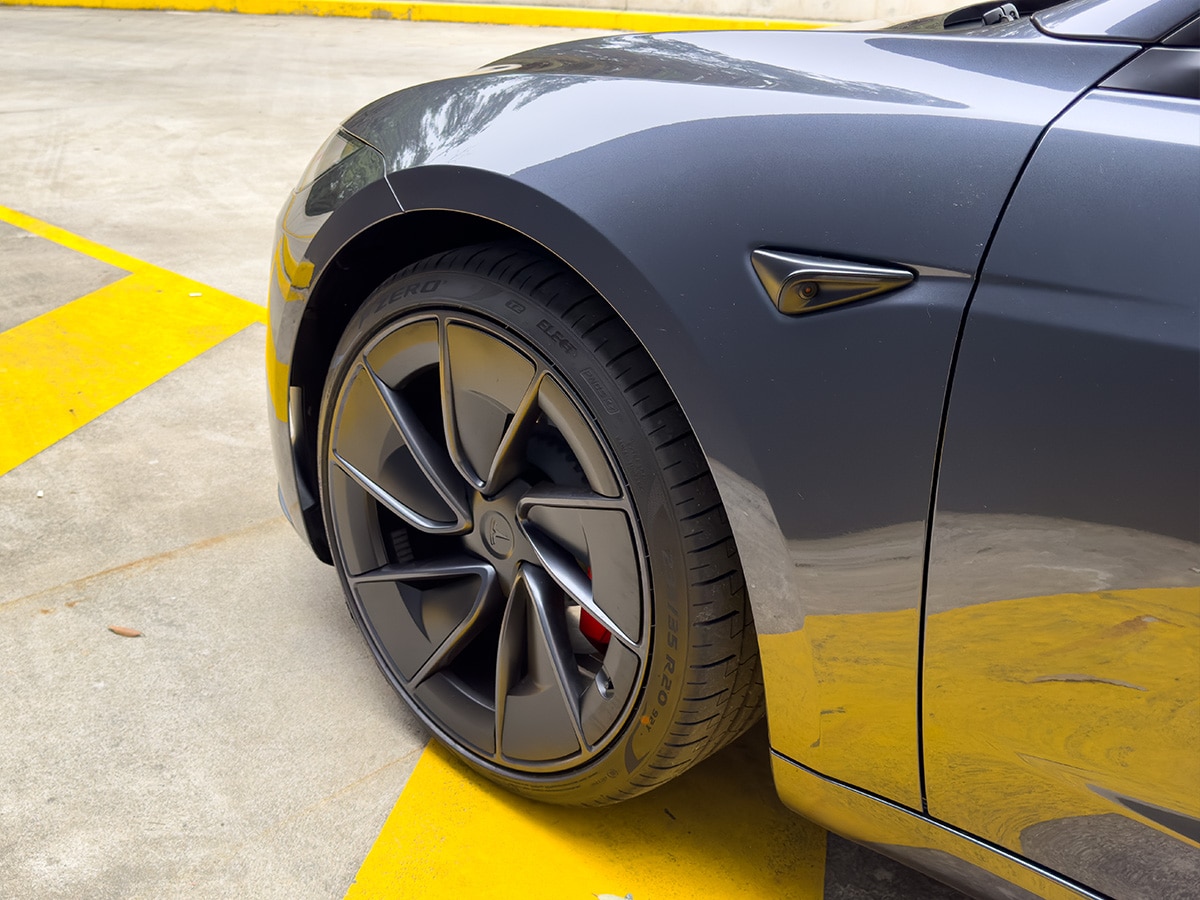
Options for the Tesla Model 3 Performance include:
- Colours – Black ($1,500), Blue ($1,500), Stealth Grey ($2,300), Ultra Red ($2,600)
- Black and White interior – $5,100
- Enhanced Autopilot – $5,100
- Full Self-Driving Capability – $10,100
You don’t need any of these options, but our test car was optioned with Stealth Grey paint ($2,300) and it’s a particularly attractive colour with the new wheel design and front and rear splitters.

How Does the Tesla Model 3 Performance Drive?
I’ll start with the straight-line speed first because I feel the need to remind everyone that there’s a significant difference between something that accelerates from 0-100km/h in 4.4 seconds and something that manages the same in 3.1 seconds. You might think, “What difference does 1.3 seconds make in the real world?” and you’d be right in saying the Dual Motor Long Range Tesla Model 3 is a quick car by any standards, but the Model 3 Performance is on another level.
Unlike many EVs that have been programmed to ramp up their speed, this hits hard as soon as you punch the accelerator pedal. It’s sickeningly fast to react to your input, and punching the throttle at any point can raise your speed by 20-30km/h, faster than you can think, “Was that a speed camera?”.
The idea that straight-line speed gets boring after a period of time doesn’t apply to EVs that are this fast; it still adds a little chuckle to even the most boring drives alongside a side of motion sickness and whiplash.
It’s surprising, then, that the most impressive addition to the Tesla Model 3 Performance isn’t the straight-line speed. The brand has introduced a new adaptive suspension controlled via its in-house software, which works in tandem with the Vehicle Dynamics Controller (VDC) to create a dynamic vehicle that transforms from an eager corner carver to a soft daily driver with the touch of a button.
It combines with increased structural stiffness, updated springs, stabiliser bars, and bushings, resulting in a very responsive chassis that is capable enough to challenge vehicles twice the price.
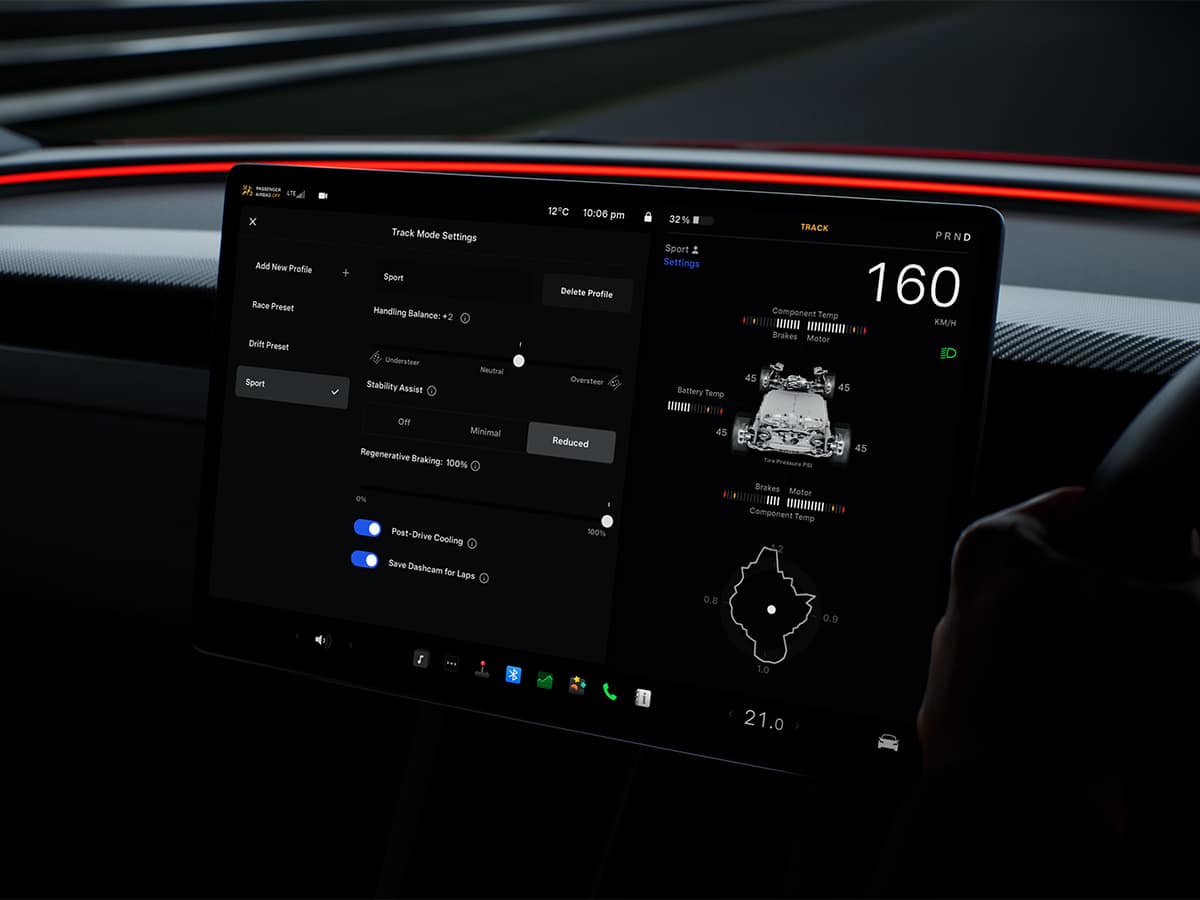
There’s also a dedicated Track Mode setting in the Tesla Model 3 Performance. However, the brand decided to disable that for our test drive, as such, we didn’t get to test the settings that can adjust the following:
- Handling Balance: Understeer to Oversteer
- Stability Assist: Off, Minimal, Reduced
- Regenerative Braking: 0-100%
The dedicated Track Mode screen also allows you to monitor your vehicle’s temperatures, including the front and rear brakes, front and rear motors, battery temperatures, and G-forces.
Even in its normal settings, the Tesla Model 3 Performance is an incredibly capable vehicle. It hangs with nearly everything on the road in a straight line, but it’s just as happy in the corners where its 1,854 kg weight seems featherlight compared to other performance EVs on the market like the Hyundai IONIQ 5 N (2,200 kg) and Polestar 2 Long Range Dual Motor (2,108 kg).
The adaptive suspension is tuned to perfection; it’s comfortable on your daily commute, and when you want a little less body roll, you simply put it in its firmest setting.
Putting power to the ground is a set of staggered Pirelli P Zero performance tyres wrapped around forged aluminium 20-inch wheels. These tyres offer great traction off the line, but more importantly, turn-in and steering response through the mid-corner are more predictable and focused. They also do a great job day-to-day at keeping road noise to a minimum, only getting louder at highway speeds.
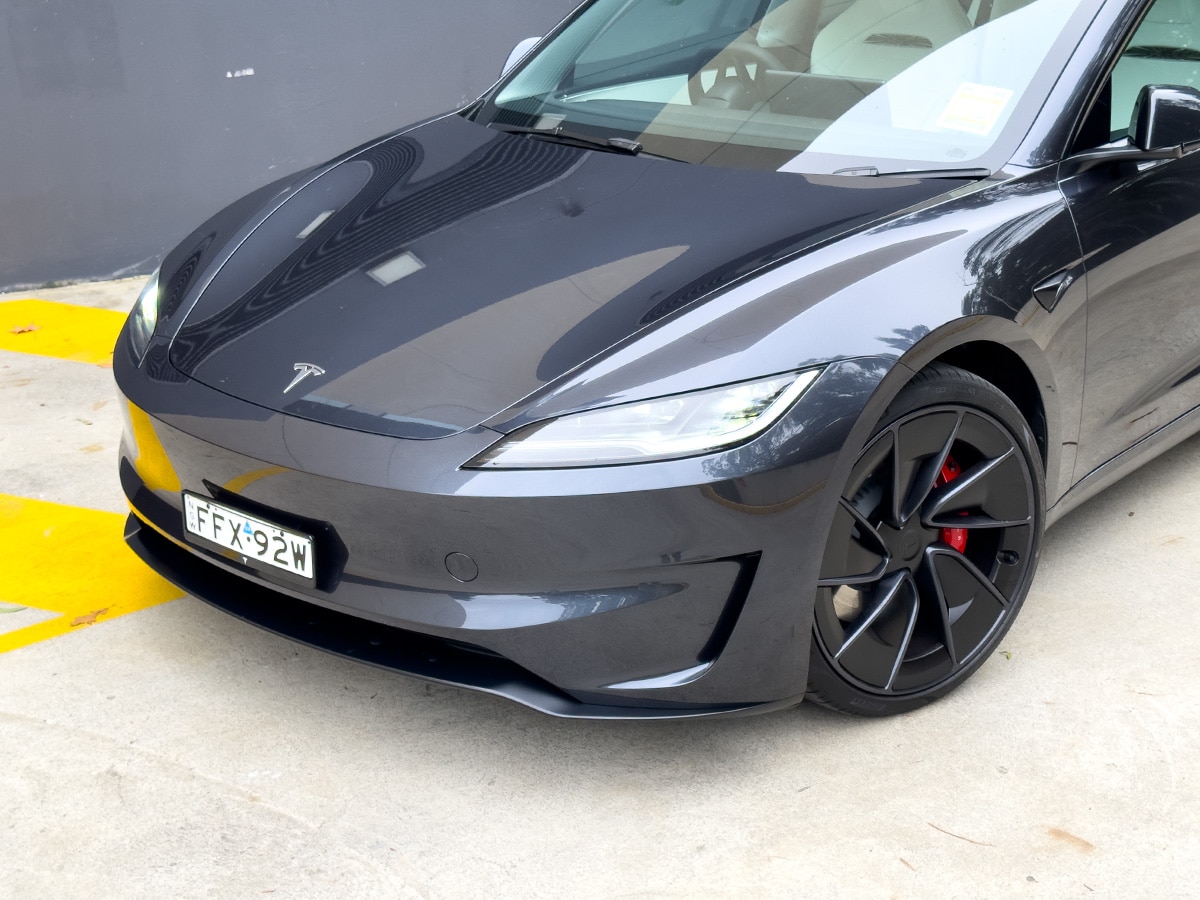
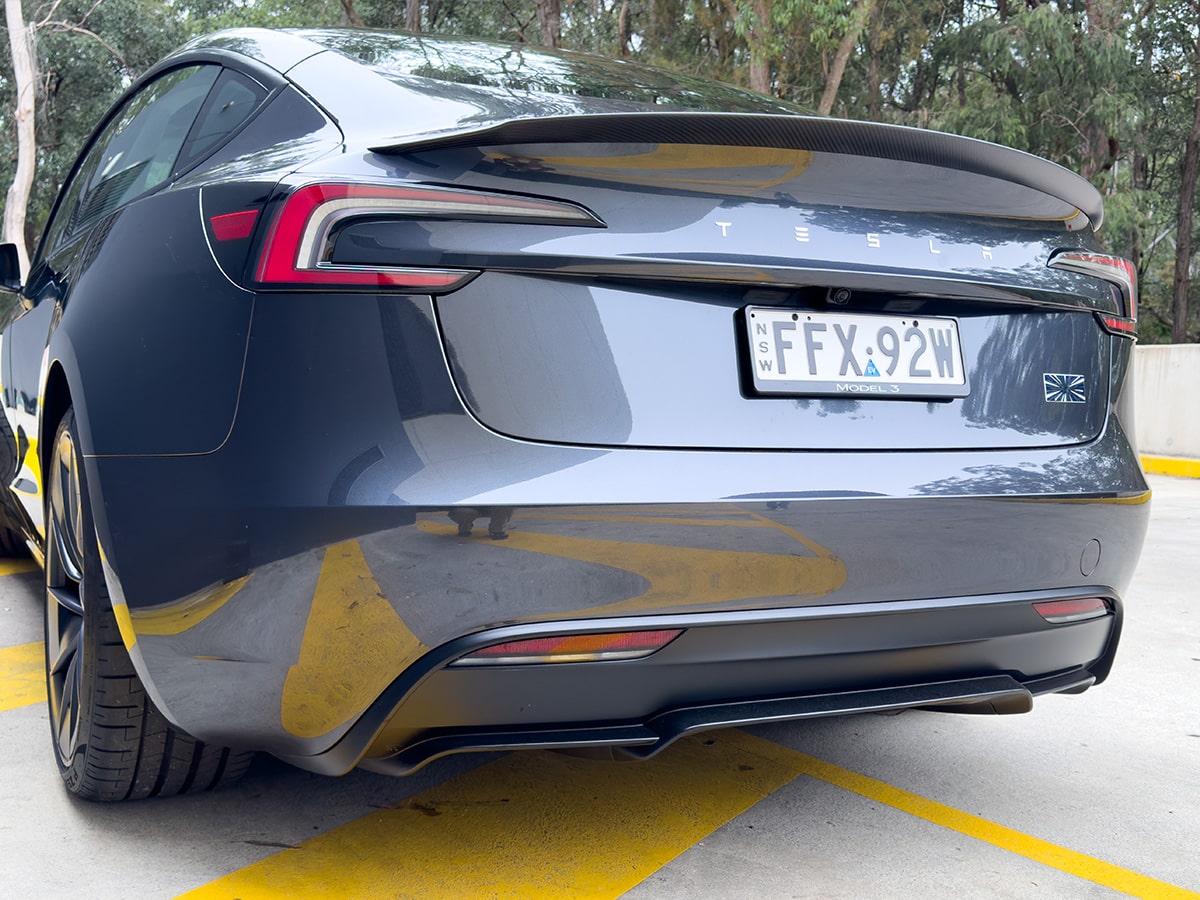
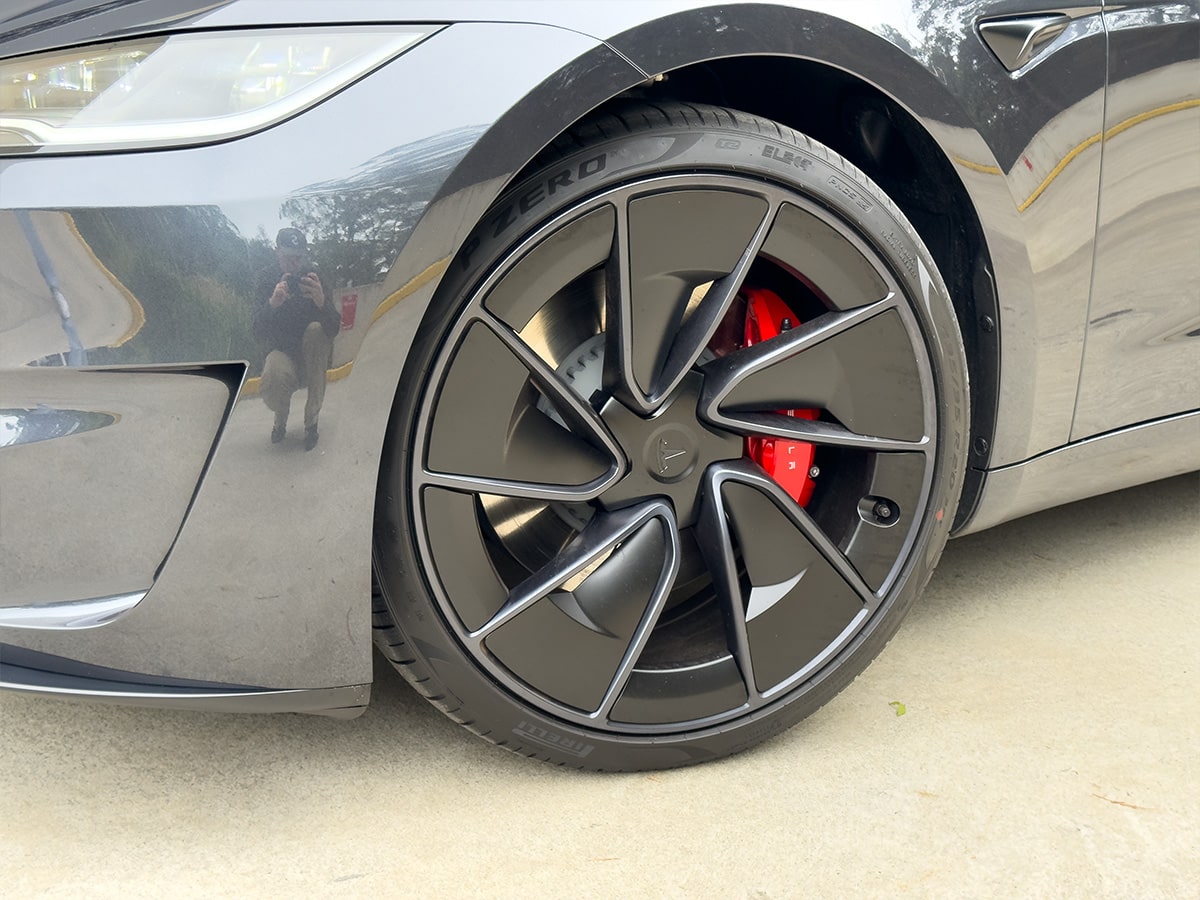
Maybe the only thing missing is any sort of character, a feeling that you’re actually driving the car and it’s not merely steering you through a corner at high speed. You get a constant sense that this Tesla would rather be driving itself. After all, the company wants to introduce Full Self-Driving and Robotaxis as soon as possible and there’s no enthusiasm in the steering or chassis to suggest otherwise.
It would be great to get the Tesla Model 3 Performance on track in the future to test the ‘Track Mode’ settings and see how they affect the vehicle’s dynamic characteristics.
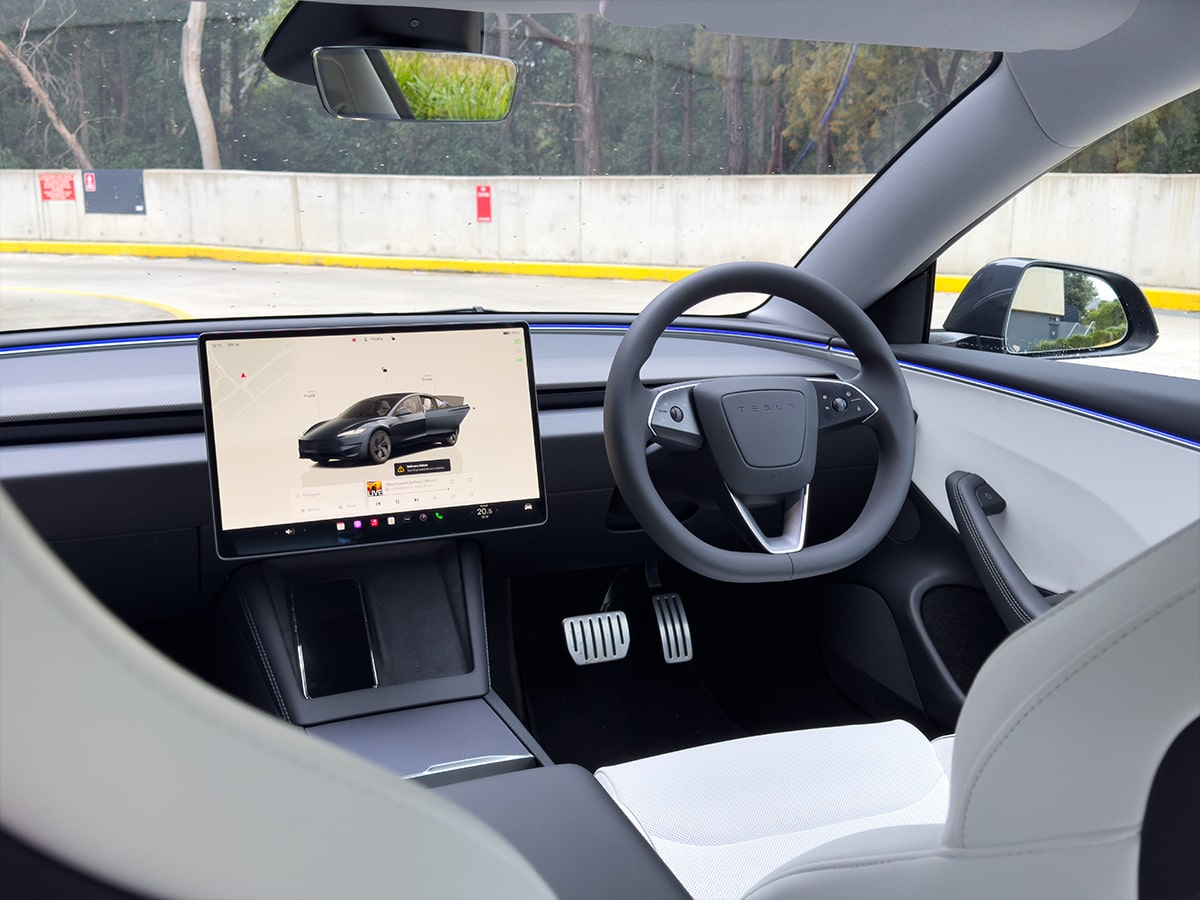
What’s the Interior Like in the Model 3 Performance?
Step inside, and the most obvious change is the addition of new heated and ventilated Sport seats which do a great job of keeping you secure. I have a large, typical Australian frame and I had no trouble fitting in the seats. However, some customers online have complained about the width of the seat base and the comfort through their hips. I’d prefer the standard seats daily, but the trade-off for looks and support will surely entice many.
The only other distinguishing feature of the Performance model is the carbon fibre trim on the dashboard. Other than that, it still uses a very minimalist design, with most functions accessed through the screen, including drive mode selections on a slider (very annoying) and steering wheel indicators (even more annoying). This is alongside ambient lighting and a quieter cabin with 360˚ acoustic glass technology.
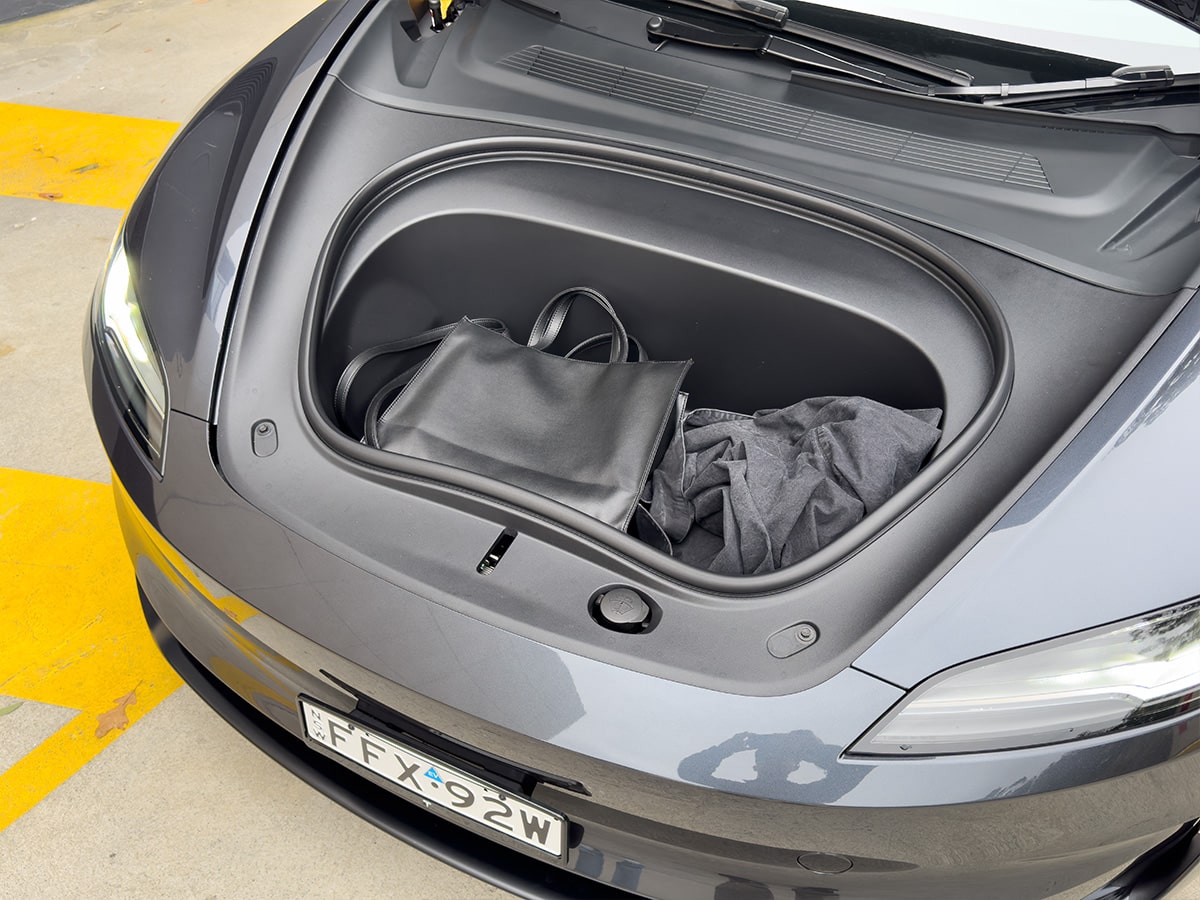
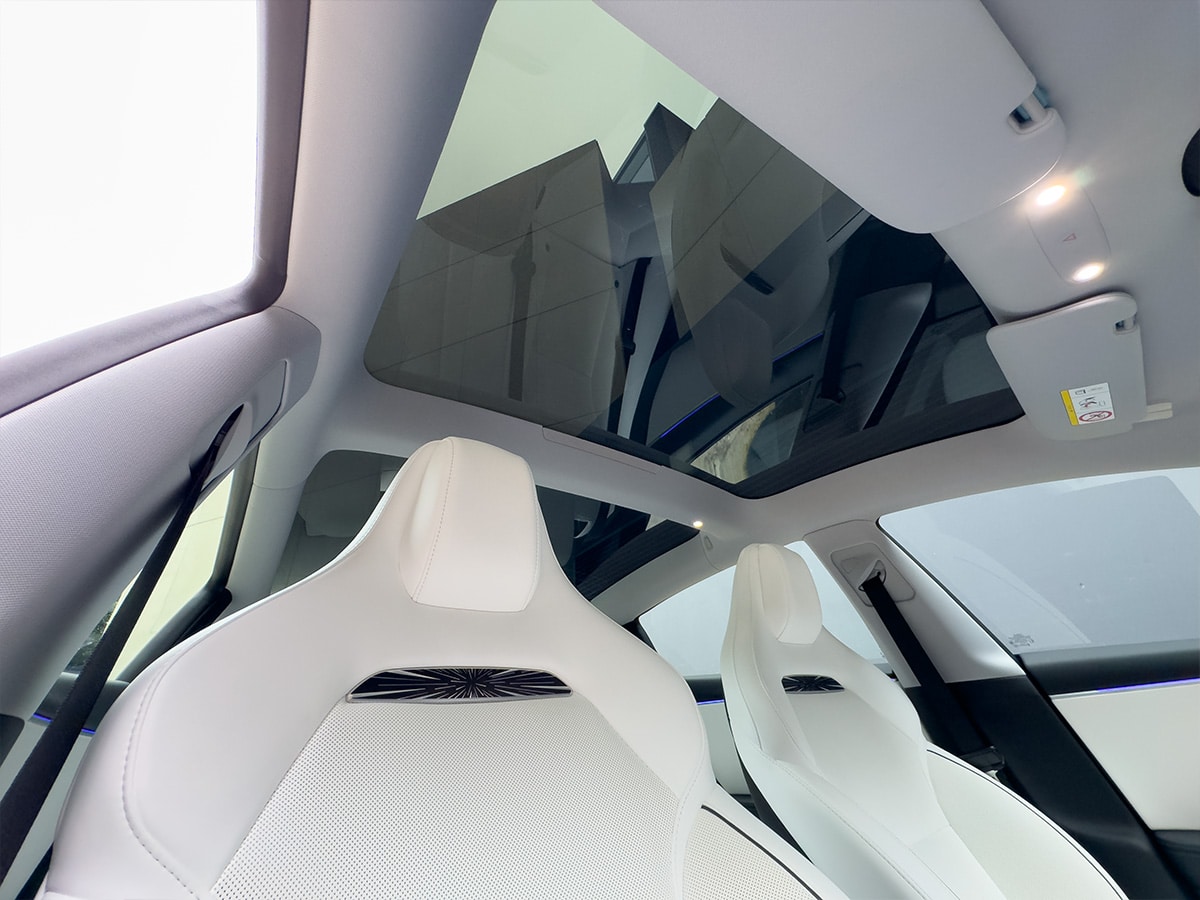
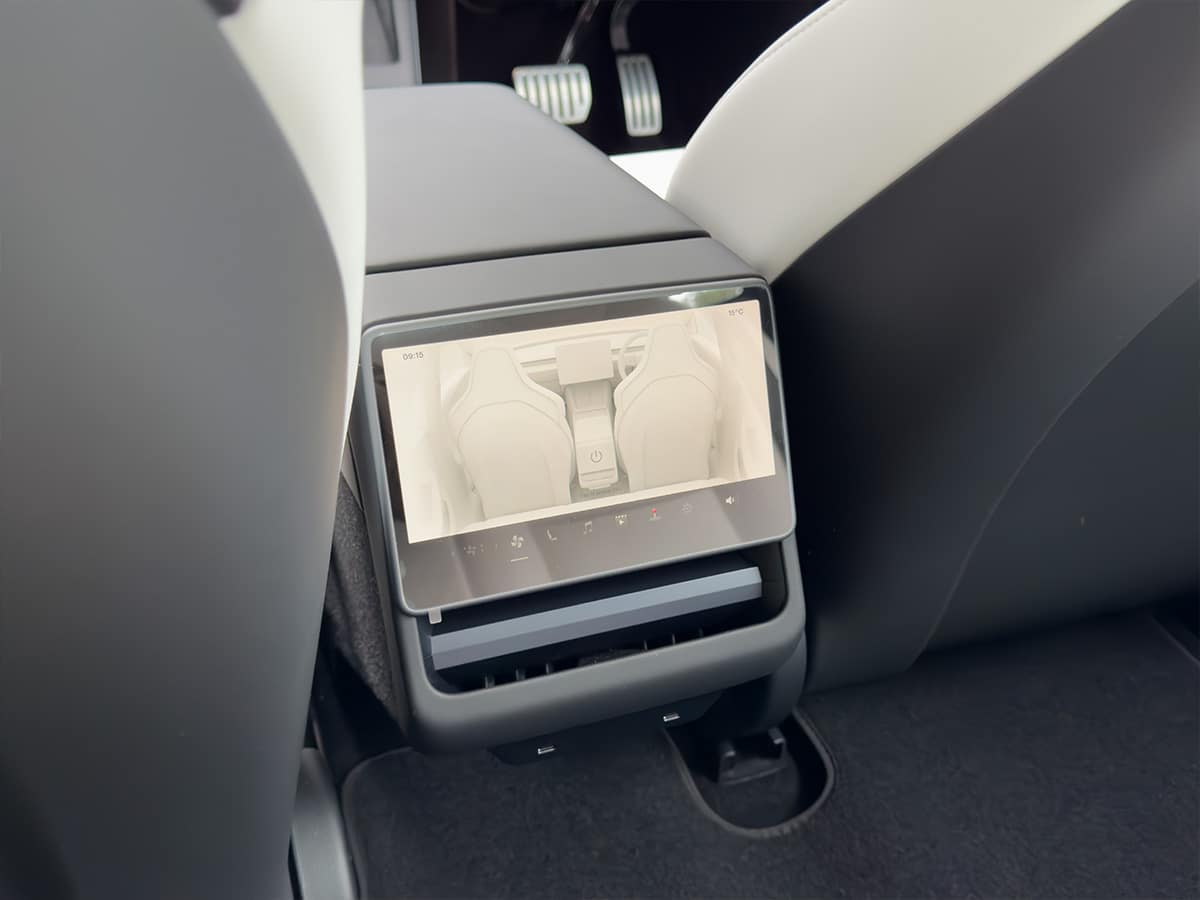
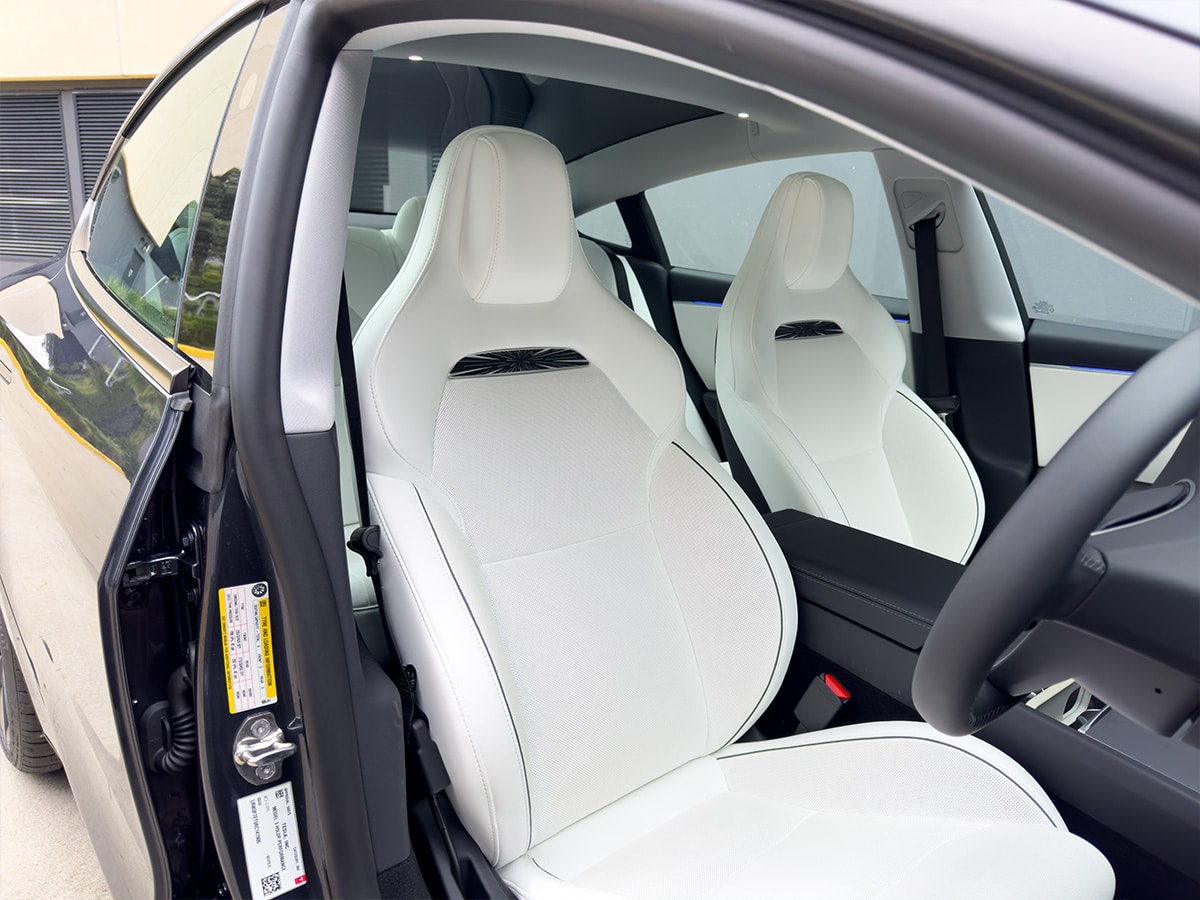
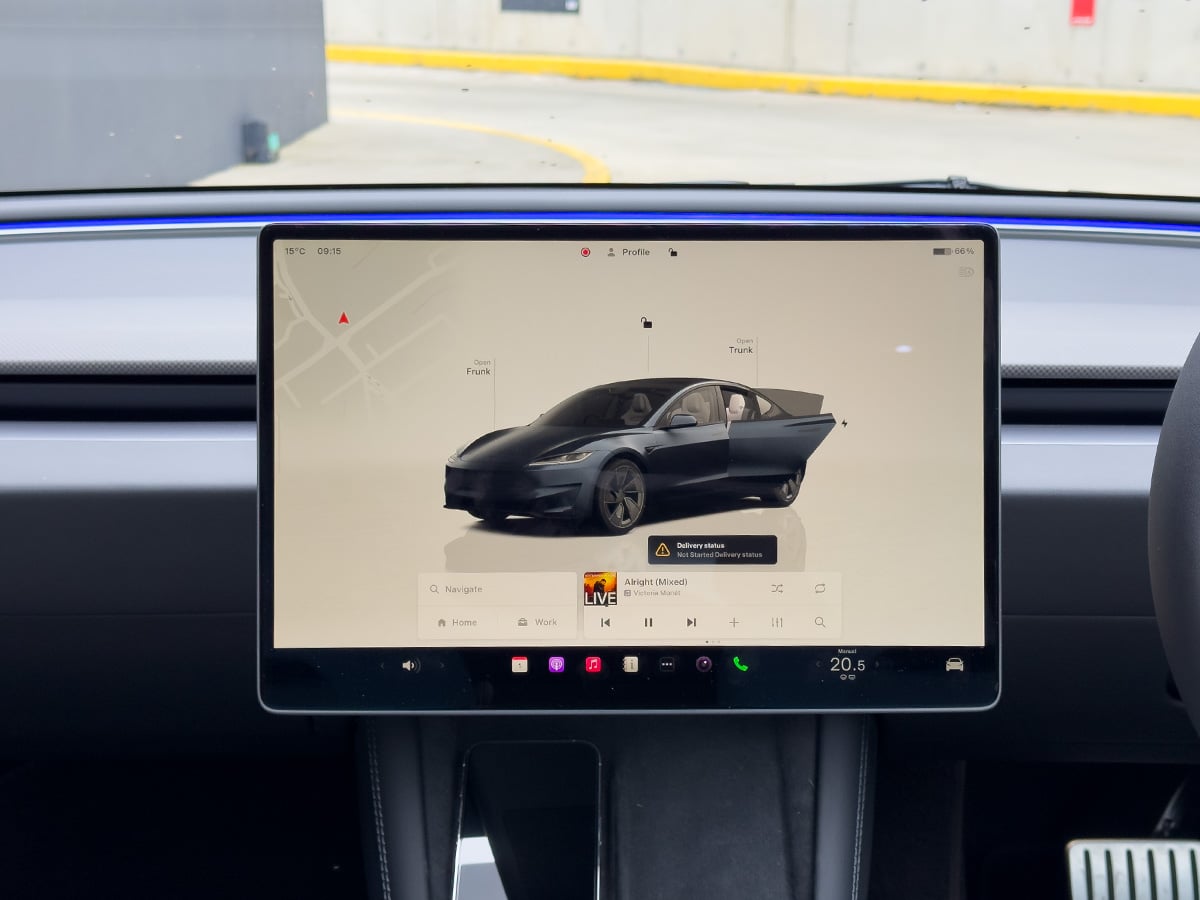
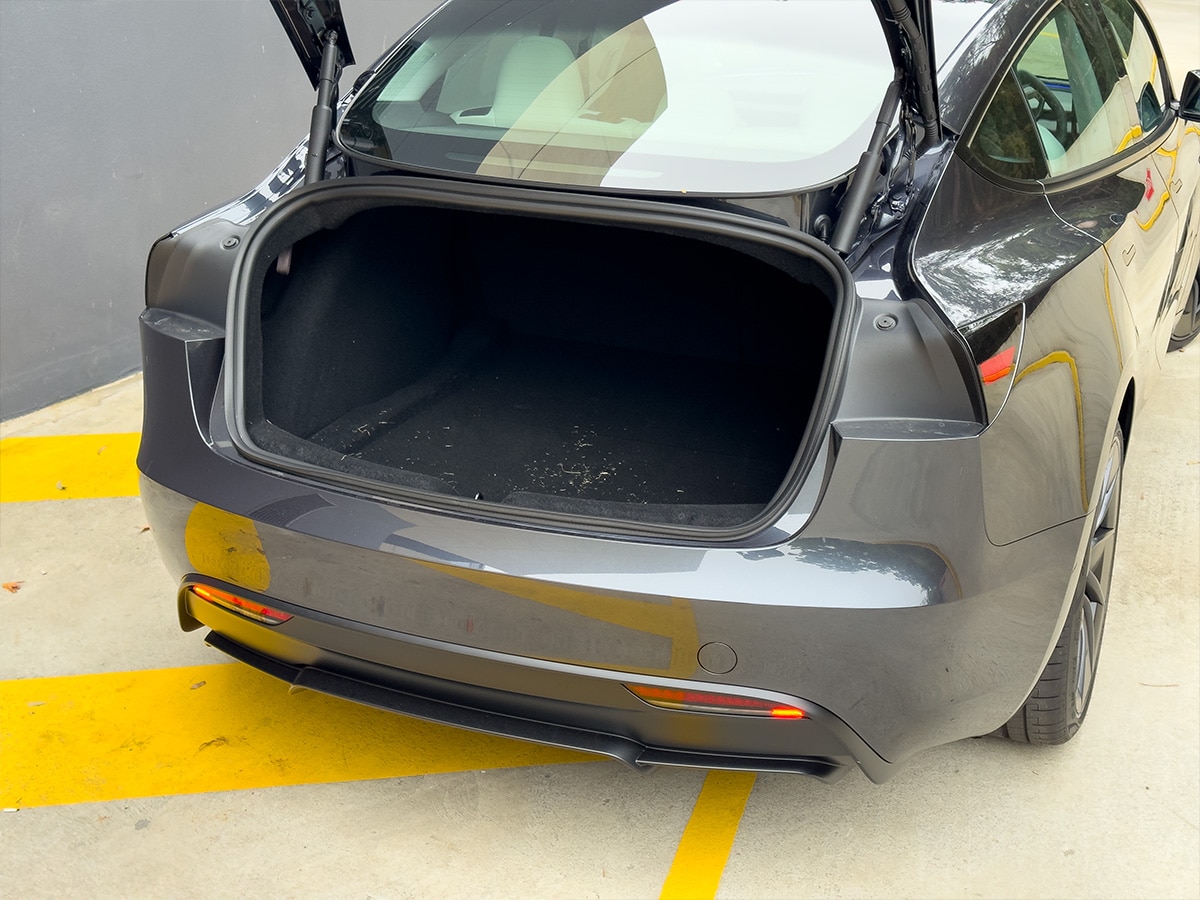
You still get dual wireless phone chargers above the large centre console, 1x USB-C port in the front, and 2x 65W USB-C ports in the rear, which are now powerful enough to charge two Apple MacBooks at once.
Every model in the lineup now comes with a rear 8-inch touchscreen for passengers, which allows them to adjust climate control and stream videos on apps like YouTube and Netflix. Those in the front still control everything on the improved 15-inch front touchscreen, backed by a 17-speaker sound system (up from 14) with the addition of 2 subwoofers and 2 amplifiers.
Finally, I’ll once again give a special shoutout to the Tesla App, which is the cherry on top of a great technology ecosystem. It allows you to use your phone as a key, pre-heat and cool the cabin remotely, and even control and move the car from outside the vehicle using the Summon feature.
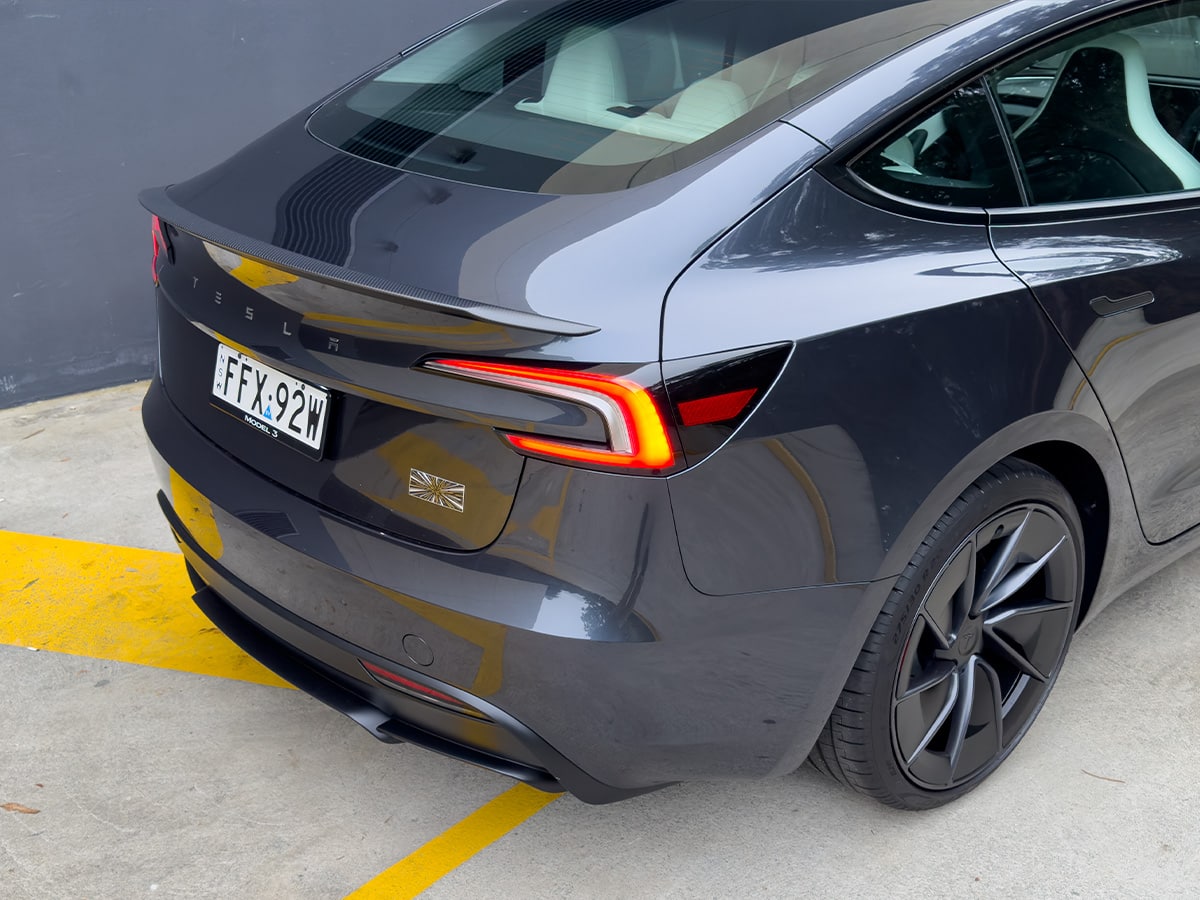
Should You Buy the Tesla Model 3 Performance?
The Tesla Model 3 Rear-Wheel Drive was my favourite electric vehicle last year, and with fading memories of an outstanding day at the track in the Hyundai IONIQ 5 N, the Model 3 Performance had a lot to live up to. Well, I’m happy to say that it delivers on its promise.
The adaptive suspension is enough to convince me that this is a worthy step up from an otherwise outstanding vehicle. However, I was disappointed to find that the Track Mode was disabled as these features had the chance to elevate the car into another category and give it a real chance against the more expensive Hyundai IONIQ 5 N which still remains the pinnacle of performance EVs.
Is it worth $26,000 more than the Tesla Model 3 RWD? That question depends on how strongly you weigh these three things: straight-line speed, sports seats, and looks.
The fact is that the Tesla Model 3 is one of the most popular cars on sale in Australia, and the only way to stand out amongst the crowd is with the unique styling of the Tesla Model 3 Performance.
The new Tesla Model 3 Performance is available to order in Australia via the Tesla Configurator below, priced from AU$80,900 plus on-roads.
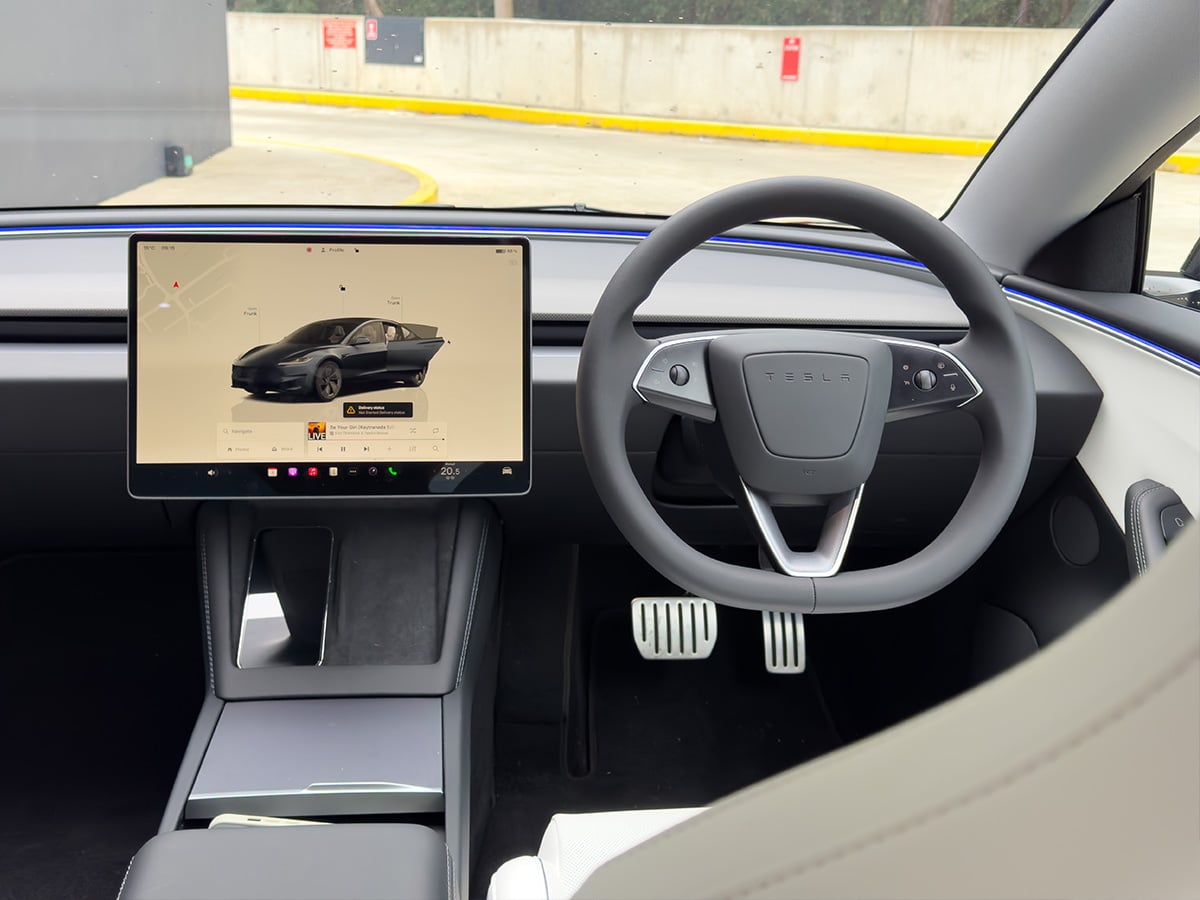
You’ll also like:













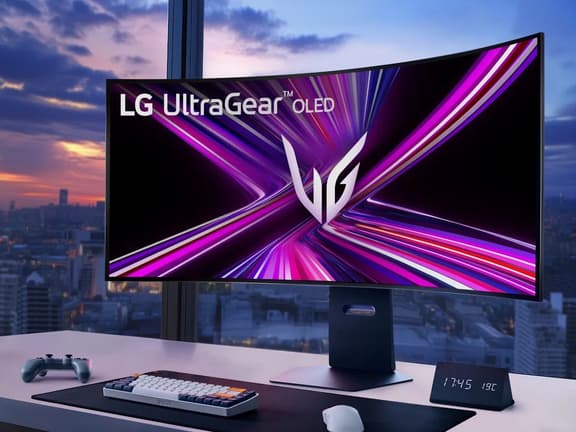






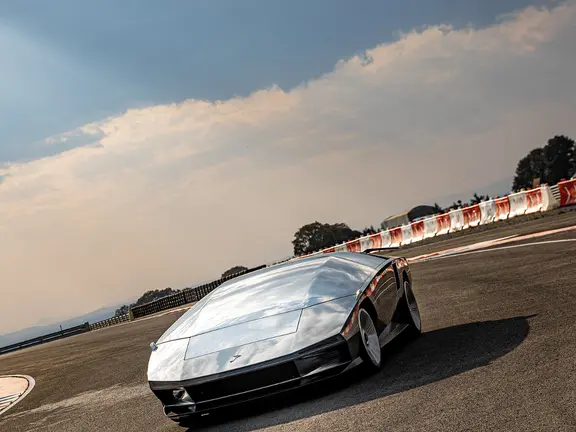





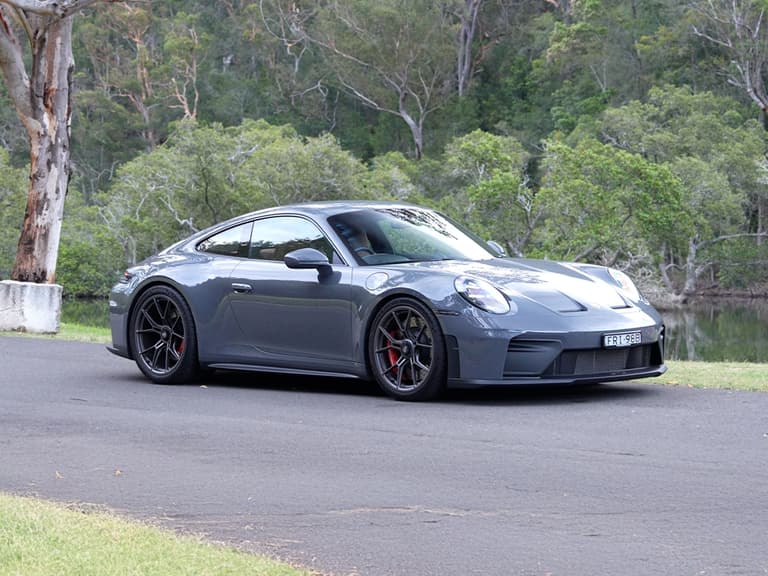
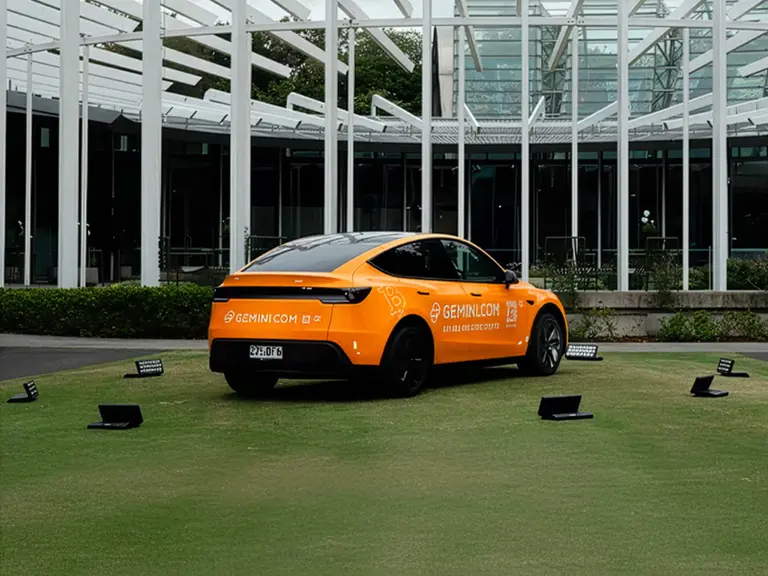
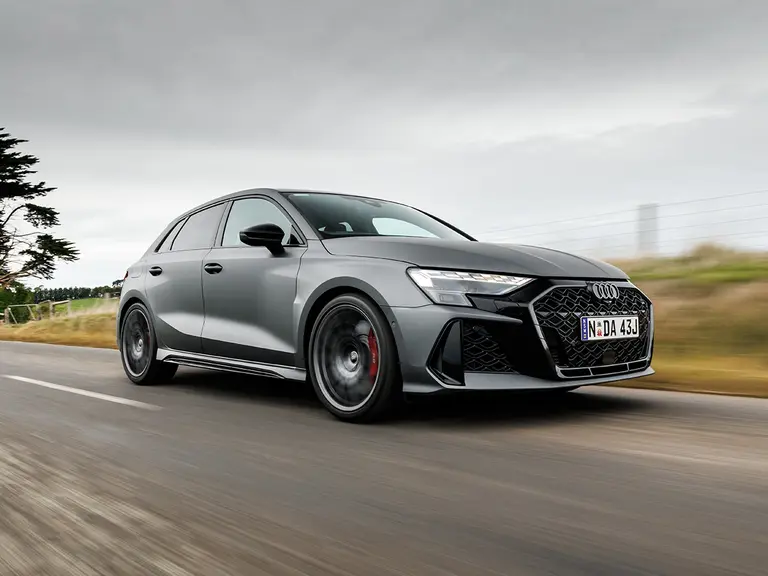

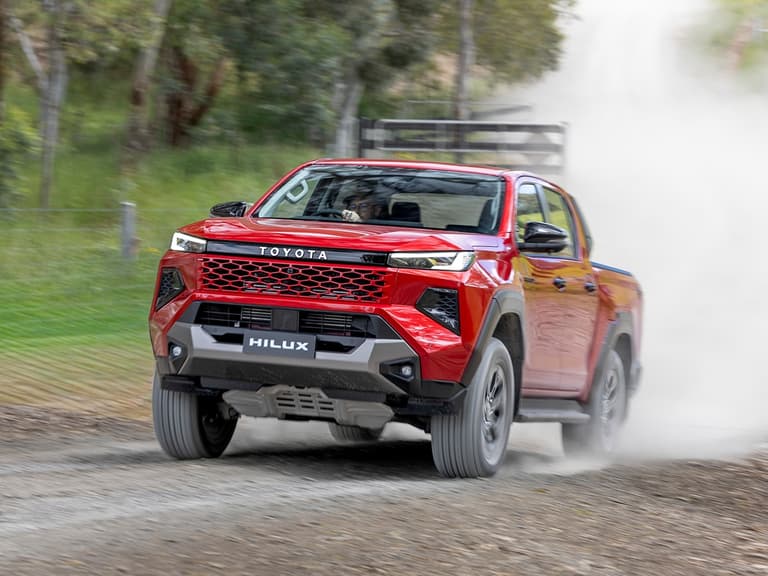
Comments
We love hearing from you. or to leave a comment.